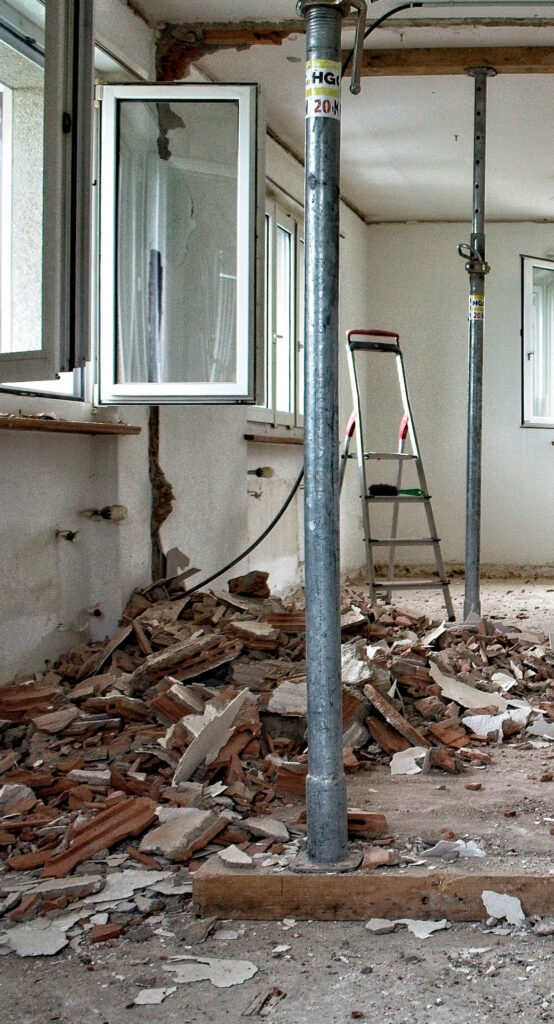
Embarking on a renovation, repair, or painting (RRP) project in a pre-1978 home with lead-based paint entails potential risks of generating hazardous lead dust.
To address these risks, the EPA strongly advises homeowners to engage lead-safe certified contractors proficient in employing lead-safe work practices. These practices encompass a set of techniques aimed at minimizing lead exposure during renovation and repair activities. Notably, the RRP rule mandates that contractors undertaking RRP projects in pre-1978 homes, childcare facilities, and preschools possess lead-safe certification.
While the RRP rule generally excludes homeowners conducting RRP projects in their own residence, certain exceptions apply, such as renting all or part of the home, operating a childcare center, or engaging in profit-driven home renovations (e.g., house flipping). In such cases, adhering to lead-safe work practices during DIY (do-it-yourself) home renovation projects becomes imperative to safeguard the well-being of oneself and one’s family. As always, if you aren’t sure, test! We can help determine, instantly, if lead paint is present.
After you read this post, go on over to DIY Home Renovations: Lead Paint #2 – where we show you the best lead-safe practices for the Do-It-Yourselfer.
Prevent dangerous lead dust from spreading throughout your home with the following DIY lead-safe work practices:
Determine if Lead-based Paint is Present
Before commencing an RRP project in your home, ascertain its construction year to gauge the likelihood of lead-based paint presence. Structures built before 1978 are prone to containing lead-based paint, with older homes carrying a higher risk. EPA recommends enlisting a certified lead inspector or risk assessor to conduct testing and ascertain the presence of lead-based paint on surfaces earmarked for renovation.
Set up Safely
In projects involving lead-based paint, containment of the work area is paramount to prevent dust and debris dispersion. The setup entails removing furniture and household items, sealing off the work area with plastic sheeting and tape, and constructing an airlock if necessary. Additionally, shutting down HVAC systems and covering vents further aids in dust containment.
Protect Yourself
Proper personal protective equipment (PPE) is indispensable to minimize lead dust exposure. Utilizing disposable N-100 certified respirators, coveralls, eye protection, gloves, and shoe covers is recommended. Regular hand and face washing, as well as refraining from consuming food or beverages in the work area, are essential precautions to prevent lead ingestion.
Minimize Lead Dust
Employing appropriate tools and techniques can help minimize dust generation during renovation activities. Wetting surfaces before sanding, using HEPA vacuum cleaners, and employing low-temperature heat guns or chemical strippers are effective methods for dust control. See DIY Home Renovations: Lead Paint #2 for more.
Leave Your Work Area Clean
Maintaining a clean work area throughout the renovation process is essential. Regular vacuuming, wiping down surfaces, and disposing of trash in heavy-duty plastic bags contribute to dust containment and cleanliness.
Control Your Lead Waste
Proper waste management is crucial to prevent the spread of lead dust. Collecting waste materials in heavy-duty plastic bags, securely sealing them, and adhering to local disposal regulations are imperative steps.
The EPA offers even more in-depth guidance on how to minimize lead exposure.
Adhering to lead-safe work practices during DIY home renovations is essential for mitigating the risks associated with lead-based paint exposure. By following these guidelines diligently and working with certified professionals like Integrity Environmental Testing & Consulting, homeowners can ensure the safety and well-being of their families during renovation projects.
We want to acknowledge that the content in this blog post has been adapted from valuable information provided by the Environmental Protection Agency (EPA). Their guidance on lead precautions during DIY remodeling serves as a cornerstone for ensuring the safety of homeowners and their families.
